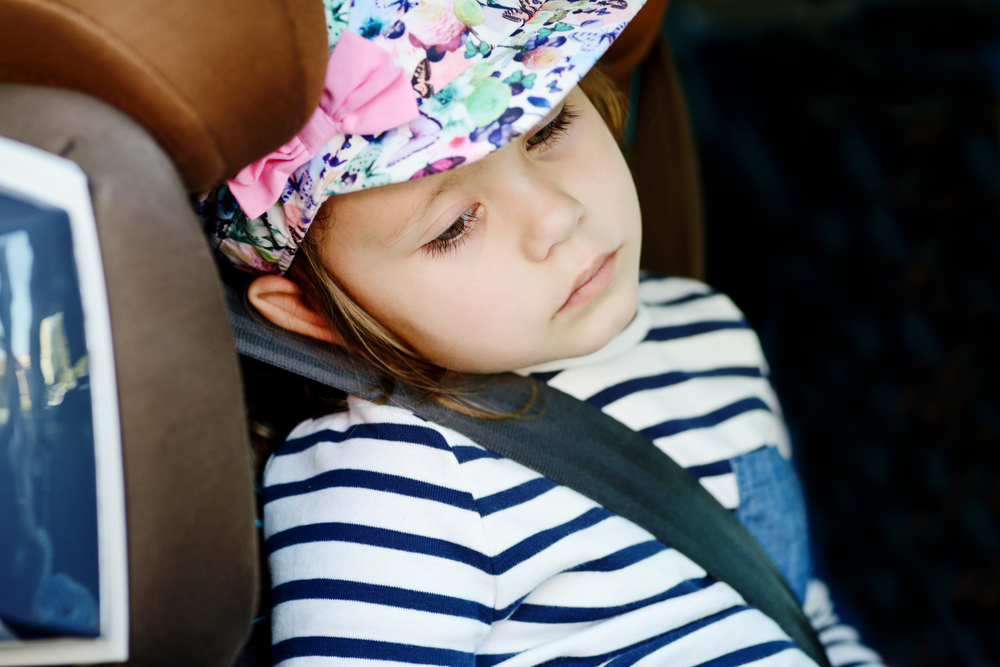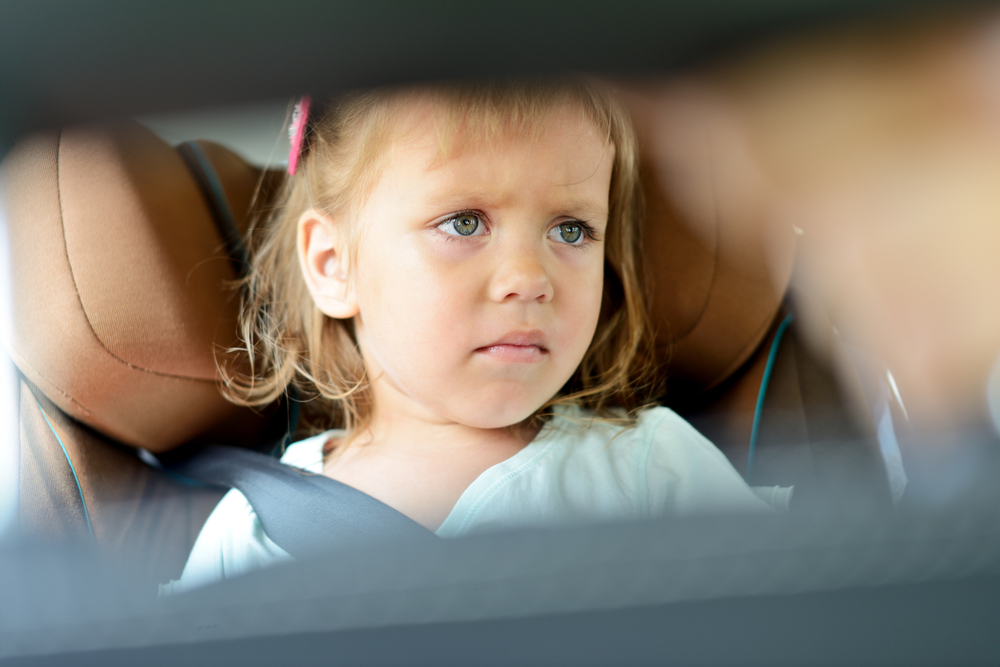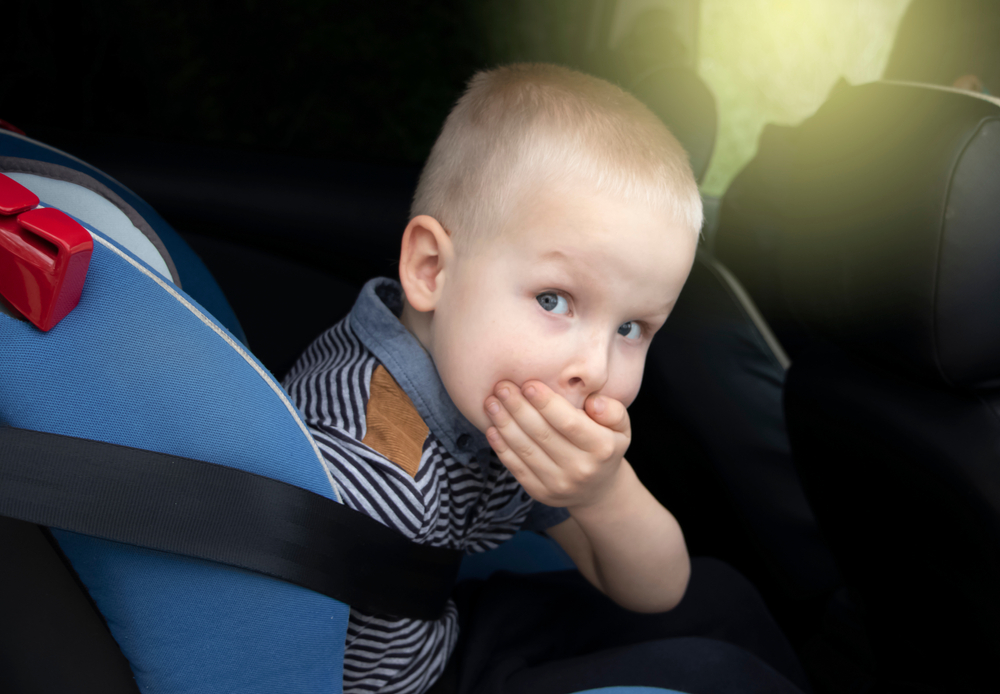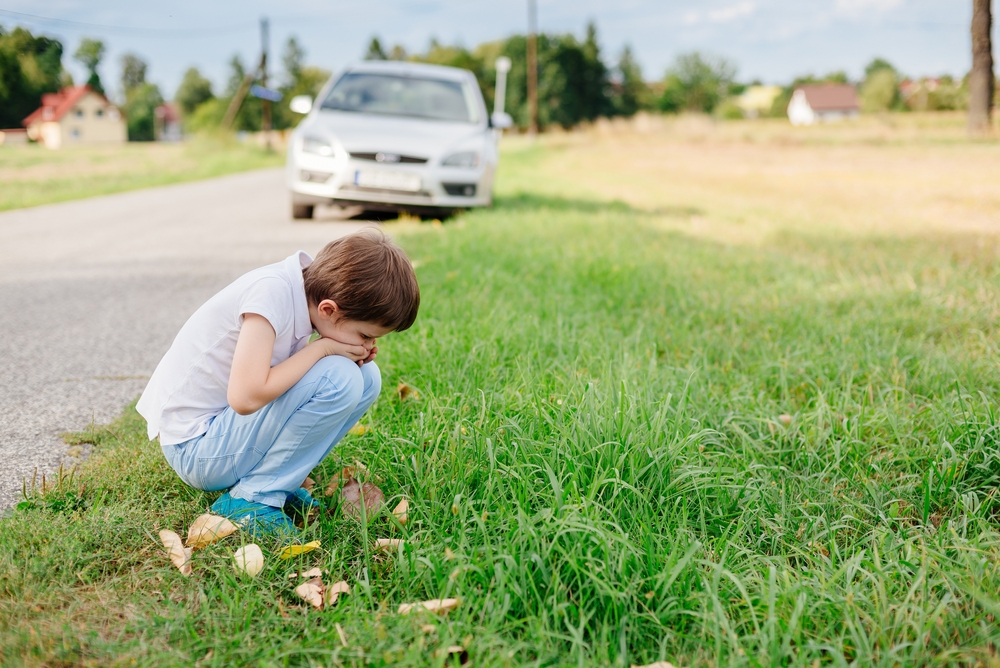Carsickness is a form of motion sickness more common in children than adults. Feeling sick during car travel is due to mixed signals to the brain. The child’s inner ear senses motion, but the eyes and body do not. This results in the queasy stomach and other symptoms linked to carsickness. Prevention may be as easy as putting a child in a booster seat so they can see out the window. For an older child, a reminder to look out the window, may help.
Even the experts don’t have all the answers as to why some children get carsick while others don’t. They are not even sure what causes carsickness. The theory is that a young child’s eyes are below the level of the car windows. The child can feel the car moving, but they see only the inside of the car—something that doesn’t move. When the inner ear senses one thing, and the eyes see another, the brain receives mixed signals, which may lead to dizziness and nausea. But this theory goes only so far as an explanation for motion sickness.
For one thing, children younger than two years old, tend not to get carsick, even though they also can’t see out the window. Carsickness is also less common in children over the age of 12. A child of 12, however, is already old enough to see out the window. Even a child of 9 is probably tall enough to see out the window. While none of this disproves the theory that mixed brain signals cause carsickness, it does tell us that other factors may play a role.
Children who experience carsickness, will also feel sick on a moving boat, or on a ride at an amusement park. In fact, an amusement park ride that whirls or spins is more likely to cause motion sickness than a ride in the car. If your child tends to get carsick, it’s probably best to avoid riding the Tilt-a-Whirl. Parents should also be aware that motion sickness can also occur during train and airplane travel.
Likelihood of Carsickness
Rough conditions increase the likelihood that a child or adult will experience motion sickness. In a car traveling on winding roads, as many as 25 percent of passengers (including adults and children) will show symptoms. Air turbulence during a plane ride, or sailing the high seas, will cause symptoms in up to 90 percent of passengers.
Genetics make carsickness more likely. A child who has one parent with motion sickness has a 50 percent chance of having it, too.
Age makes a difference in the severity of the symptoms. A child’s symptoms tend to be worse than those of a carsick adult. Children aged 2-12 are also more likely to experience symptoms, while adults over the age of 50 are less likely to have a bout of motion sickness.
While there are factors that make motion sickness more likely to occur, parents should be aware that emotional problems are not one of them. Children are not capable of controlling carsickness through will power. It either happens, or it doesn’t, no matter the child’s “issues.”

Carsickness Symptoms
The list of carsickness symptoms is not long, but the symptoms do vary according to age. Young children tend to feel dizzy and want to lie down, while children over 12 mostly experience nausea. The good news is that the symptoms end with the journey—or at least shortly thereafter.
Here is a list of car and motion sickness symptoms:
- Loss of appetite
- Nausea
- Vomiting
- Fatigue
- Wants to lie down
- Dizziness
- Breaking out in a cold sweat
 Carsickness Strategies and Prevention
Carsickness Strategies and Prevention
Some children will get carsick every time they travel, no matter what tricks you employ. With a little planning, however, prevention is possible. Some of the following 8 strategies may be helpful in preventing or at least easing the symptoms of car sickness:
- Meal planning—Have your child eat lightly before setting out in the car, and discourage them from eating close to travel time. If the child feels hungry while riding in the car, you can give them something small and not strongly flavored. A few plain crackers and a small drink of water are perfect for a short trip. Have your child take it slow though; unless it’s very hot, they should wait a bit between drinks of water, ideally 15-20 minutes.
- Air circulation—Good air circulation is an important factor in controlling car sickness. Believe it or not, circulating the air inside your car is more important than taking in fresh, outdoor air, especially in smog, smoke, or dusty conditions. If your child is already nauseated, however, it’s probably best to crack the windows, or if possible, have them talk a walk out of doors.
- Seating—Children ages 2-12 must sit in the backseat. For plane travel, kids should sit over the wings or closer to the front of the airplane. A window seat is helpful for kids during flights and train rides. In a car, the best possible seat for a child is the middle back seat. That way, the child has a clear view out the front window. Looking straight ahead, out into the distance, is a good preventive measure for carsickness. It’s also good for eye health.
- Eye Focus—Looking out the window, even a side window, is better than focusing on things like games or screens or books, and even the design of your car’s upholstery.
- Sleep—A child who gets carsick can usually nap straight through a journey with nary a symptom. For a child still young enough to nap, plan to travel during naptime, whenever possible.
- Medication—For an extended trip, check with your child’s physician about over-the-counter antihistamines, like Benadryl (diphenhydramine) or Dramamine (dimenhydrinate), both effective at preventing car sickness. The doctor is the best one to advise you on this subject. They know your child. If the doctor approves medication, have the child take it around an hour before they travel at the recommended dose. These medications can cause drowsiness. The newer antihistamines that don’t cause drowsiness, for some reason don’t work as a preventative to carsickness and motion sickness in general.
- Distraction—Come prepared to distract your child at the first sign of carsickness. Buy some inexpensive toys to give them along the way. Think up interesting questions that will spark a conversation with your child. Put on music. Sing a song together or alone, as a captivating solo. Anything to take their minds off the first faint symptoms of carsickness. The trick is to catch the moment before it turns into full blown carsickness.
- Use medication. If you’re planning a car trip, ask your child’s doctor about using an over-the-counter antihistamine, such as dimenhydrinate (Dramamine) or diphenhydramine (Benadryl), to prevent car sickness. Both medications work best if taken about an hour before traveling. Read the product label carefully to determine the correct dose and be prepared for possible side effects, such as drowsiness. Nondrowsy antihistamines don’t appear to be effective at treating motion sickness.
 How to Cope
How to Cope
If in spite of your efforts, your child starts feeling carsick, stop the car as soon as you can and have the child walk outside for a bit, or if they feel too unsteady, have them lie on their back on the backseat of the car for a few minutes with their eyes closed. Placing a wet wipe, or a cloth dampened with cold water on your child’s forehead can also help to soothe the symptoms.
For most children, carsickness is neither dangerous nor serious. Carsickness for some children, however, can be a risky proposition. Illness, or even simple hot weather, can worsen symptoms like vomiting and dizziness. This, in turn, may lead to such health risks as dehydration or falls. If in doubt, ask your child’s physician to give you an overview on what is and isn’t safe for your child when it comes to travel. When it comes to carsickness, err on the side of caution; it’s always better to be safe than sorry.
